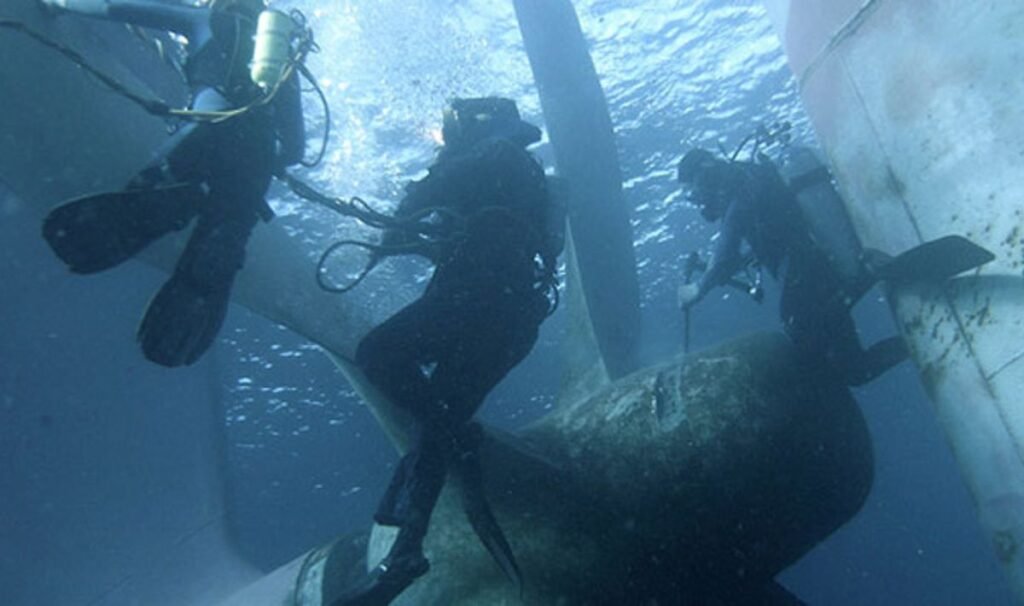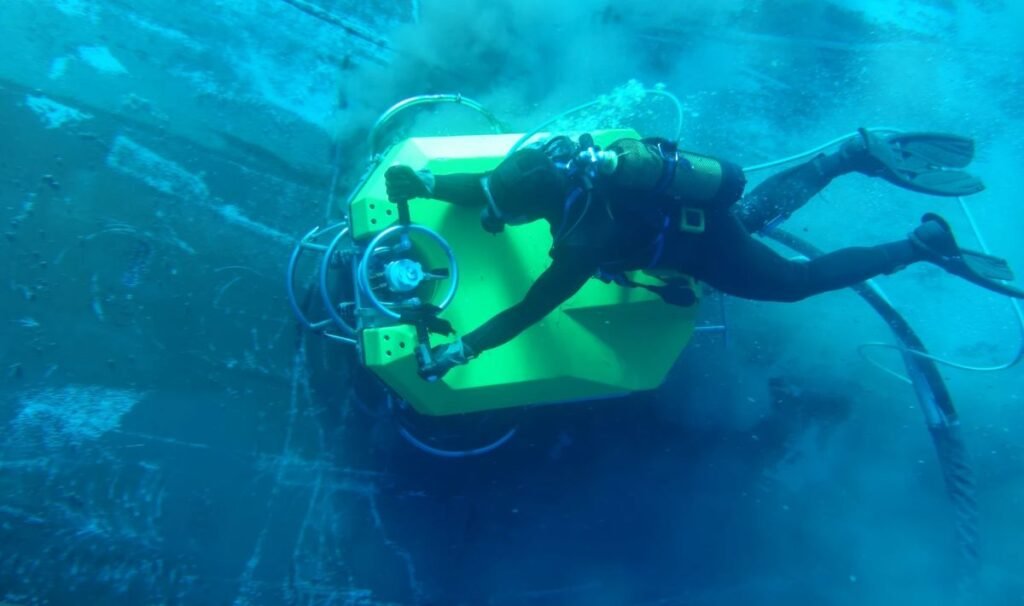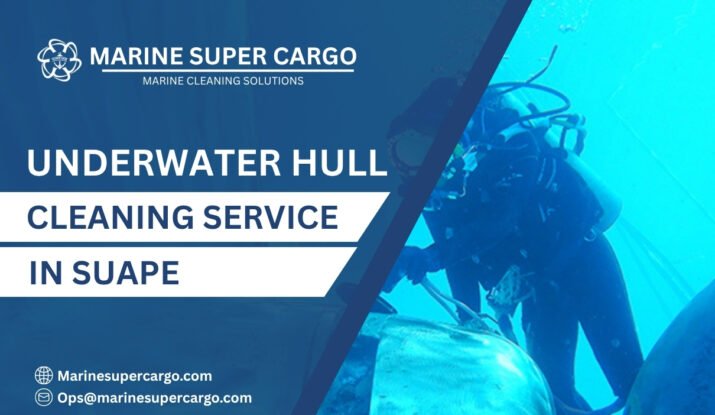Picture your ship slicing through Suape’s azure waters, throttle open, engines humming in tune, and not a hint of a drag beneath. Now, ask yourself—below that sparkling surface, what’s slowing your journey? That’s where the real drama unfolds. Welcome to the world of underwater hull cleaning in Suape: the secret weapon every shipowner needs for seamless voyages and bottom-line savings.
Why Prioritize Underwater Hull Cleaning in Suape?
Suape’s nutrient-rich, high-traffic waters accelerate biofouling—barnacles, algae, and tube worms quickly colonize idle hulls. This growth increases drag, fuel costs, and emissions. Smart operators choose underwater hull cleaning in Suape to stay efficient, compliant, and eco-conscious, just like in Porto de Santos.
Suape’s Dynamic Marine Environment: What Makes It Unique?
Nestled on Brazil’s northeast coast, Suape is not just any port—it’s a mosaic of estuaries, rivers, and Atlantic currents. Since the 1980s, the rapid development of its industrial port has transformed both land and sea. Today, the Suape estuarine complex faces a mix of marine and anthropogenic challenges, from periodic dredging to shifting salinity and oxygen levels.
What does this mean for your vessel? These changing conditions—warm temperatures, nutrient influx, and high boat traffic—form the perfect storm for marine organisms seeking a new home on any submerged surface. Hulls in Suape get fouled faster and demand vigilant maintenance.

Biofouling 101: The Silent Enemy Below the Waterline
Biofouling is nature’s slow sabotage—starting with algae and slime, escalating to barnacles, worms, and crustaceans that invade every crevice. Even minor buildup can increase fuel use by 10%, while heavy fouling can double costs, corrode hulls, and damage coatings. It’s a hidden threat to both performance and compliance. Learn more at the International Maritime Organization (IMO).
Modern Methods for Underwater Hull Cleaning in Suape
Welcome to the twenty-first century, where regular dry-docking isn’t your only hope. Underwater hull cleaning in Suape is now faster, safer, and more effective than ever.
Diver Teams and Cutting-Edge Equipment
At Suape, expert commercial divers lead the charge, armed with rotating brushes, high-pressure water jets, and mechanical scrapers. For especially complex tasks, underwater cameras and remotely operated vehicles (ROVs) scan for growth in hard-to-reach spots.
Larger ships may benefit from propeller polishing and anode checks in the same dive—a holistic approach to hull health and operational readiness.
Eco-Friendly and Compliant Cleaning Techniques
With environmental scrutiny rising, leading providers in Suape use eco-friendly cleaning methods. New vacuum and suction systems capture debris, preventing the spread of invasive species and marine pollution. Oversight and compliance with Brazilian environmental directives are now the norm, adding extra assurance for responsible operators.
The Benefits of Proactive Underwater Hull Cleaning in Suape
Why act now rather than later? Aside from the clear operational boost, proactive underwater hull cleaning in Suape ensures:
Fuel Efficiency and Operational Savings
- Smoother hull, smoother ride: Cut fuel consumption by 10–25%, depending on the degree of fouling.
- Extended life for coatings: Gentle, frequent cleaning preserves anti-fouling paints, saving you from costly drydock repaints.
Environmental Stewardship and Regulatory Peace of Mind
- Lower emissions: Less drag means fewer greenhouse gases—an authentic nod to green shipping.
- Regulatory ease: Pass inspections in style; Suape, as a regulated hub, demands proof of responsible maintenance.
When Should You Schedule Your Next Underwater Hull Cleaning in Suape?
Don’t wait until your fuel bills skyrocket or your ship drags through the water like it’s plowing mud. Timely hull cleaning hinges on:
- Frequency: Every 6–12 months, though busy ships in Suape’s waters may benefit from extra attention.
- Trigger events: After long stationary periods, before major inspections, or when operating at peak efficiency is paramount.
- Biofouling risk: Seasonal bursts of marine growth, especially post-rainy season, can accelerate the need for cleaning.
A stitch in time does save nine—schedule proactively to save money and headaches.
A Tour of Services Available in Underwater Hull Cleaning in Suape
Suape’s service providers are seasoned pros, offering a spectrum of underwater hull and marine solutions:
Inspections, Maintenance, and Repairs
- Visual and video inspections: To map out biofouling and recommend the perfect cleaning strategy.
- Routine maintenance: Including sea chest clearing, propeller and rudder cleaning, and monitoring protective anodes.
- On-the-spot repairs: Minor underwater welding, patching, and urgent fixes keep you on schedule and afloat.
These services often bundle together for time and cost savings—a tailored approach for each vessel.
Selecting a Trusted Provider in Suape
Picking your hull cleaning partner is like scouting the right crew for a big race. Prioritize:
- Local experience: Providers who know Suape’s tides, currents, and regulations offer invaluable insights.
- Certifications: Ensure compliance with international and Brazilian marine safety and environmental standards.
- Safety focus: Modern equipment, real-time communication, and properly trained divers matter.
- Transparency: Ask for before-and-after reports, video documentation, and environmental compliance.
Step-by-Step: The Hull Cleaning Experience
Assessment, Execution, and Documentation
- Pre-clean inspection: Divers or ROVs document the fouling, photograph problem areas, and assess overall hull health.
- Cleaning operation: Targeted manual or mechanical cleaning—starting with the waterline and working systematically downward.
- Waste collection: Suction/vacuum systems ethically capture debris, especially near sensitive marine zones.
- Final review: A post-clean survey with photographic evidence ensures nothing is missed.
- Reporting: Receive detailed reports, vital for compliance and future maintenance planning.
Challenges Unique to Suape—And How Pros Overcome Them
Every port has its quirks, and Suape is no exception:
- Seasonal variation: Rainy seasons boost nutrient levels, which can spike marine growth, demanding flexible scheduling.
- Visibility and strong currents: Estuarine inflows or dredging events can kick up silt, making visibility tough. Local divers are equipped for these challenges, using advanced lighting and navigation systems.
- Industrial and shipping activity: Heavy port use requires agile operations—providers in Suape can coordinate cleaning around tight shipping schedules.
Professional teams thrive on adapting to these challenges, minimizing their downtime, and maximizing their returns.

Maximizing the ROI of Underwater Hull Cleaning in Suape
To get bang for your buck:
- Stick to a proactive calendar: Prevention trumps crisis control every time.
- Maintain records: Cleaning logs and inspection reports smooth the way through audits, claims, and port authority checks.
- Educate your team: Crews attuned to early growth can trigger timely interventions.
- Bundle services: Many providers offer deals for packaging hull cleaning with inspection, repairs, and photography.
Conclusion: The Smarter Way to Sail in Suape
Running a vessel in Suape is a high-stakes balancing act—efficiency, safety, compliance, and sustainability. Regular underwater hull cleaning in Suape is the compass that points true north for shipowners determined to stay ahead in every category. It’s not just about speed, savings, or inspection stickers; it’s about pride in your fleet, protection for the local ecosystem, and smooth operations every nautical mile.
FAQ:
Q1. How often should I schedule underwater hull cleaning in Suape?
Every 6–12 months is a great baseline, but more frequent cleaning may be needed for high-traffic vessels or those spending extended time at anchor.
Q2. Can hull cleaning in Suape be done while my vessel is loaded or during port operations?
Most cleaning is safely performed while the vessel is docked or anchored, and professional teams coordinate to minimize operational disruptions.
Q3. Are the cleaning methods used in Suape environmentally sustainable?
Q4. What documentation do I receive after a hull cleaning?
You get comprehensive reports, before-and-after photographs or video, and legal certification for inspection and compliance.
Q5. Are emergency hull cleaning or repairs available in Suape?
Absolutely. Several companies offer rapid-response teams for urgent repairs or last-minute cleaning before critical operations, ensuring you’re never left adrift.


